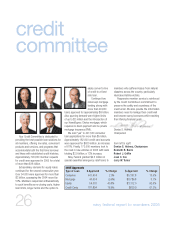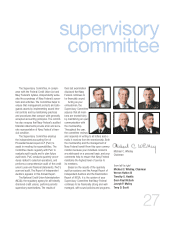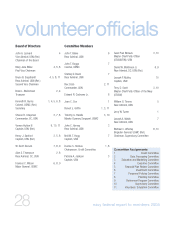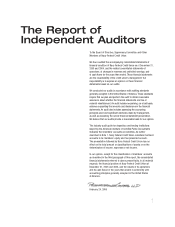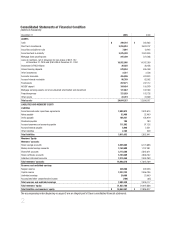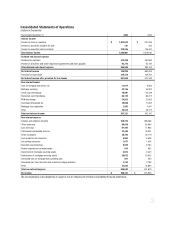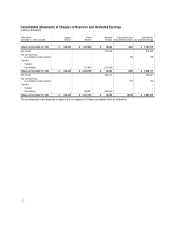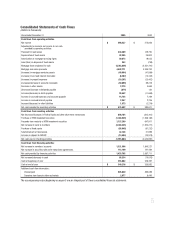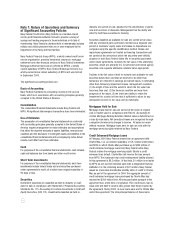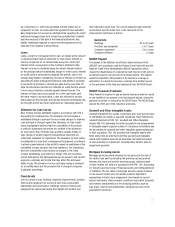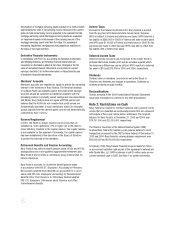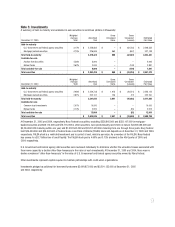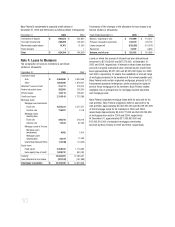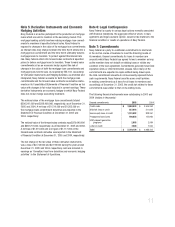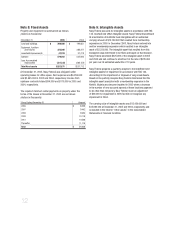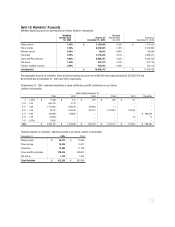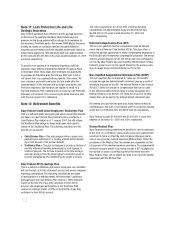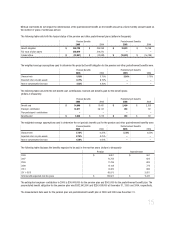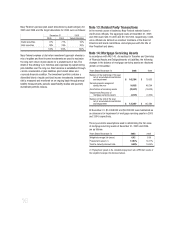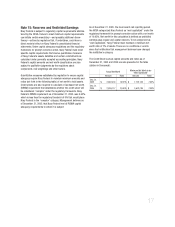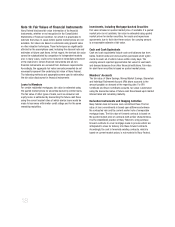Navy Federal Credit Union 2005 Annual Report Download - page 38
Download and view the complete annual report
Please find page 38 of the 2005 Navy Federal Credit Union annual report below. You can navigate through the pages in the report by either clicking on the pages listed below, or by using the keyword search tool below to find specific information within the annual report.
8
Amortization of mortgage servicing assets is based on a method which
approximates the ratio of net servicing income received in the current
period to total net servicing income projected to be realized from the
mortgage servicing assets. Mortgage servicing assets are evaluated
for impairment based on the excess of the carrying amount of the
mortgage servicing assets over their fair value. For purposes of
measuring impairment, mortgage servicing assets are stratified on
the basis of loan type and term.
Derivative Financial Instruments
In compliance with FAS 133,
Accounting for Derivative Instruments
and Hedging Activities,
all derivative financial instruments are
recognized on the balance sheet at fair value. Changes in the fair
value of derivative financial instruments are recorded in current
earnings. See Note 5 for further information on Navy Federal’s use
of derivative financial instruments.
Members’ Accounts
Members’ accounts are classified as equity to denote the ownership
interest of the members in Navy Federal. The American Institute
of Certified Public Accountants opined that credit union savings
accounts should be classified as liabilities consistent with the
prevailing practice in mutually owned savings and loan associations
and banks. Navy Federal does not agree with this opinion and
believes that the AICPA did not consider that credit unions are
fundamentally dissimilar to such institutions, which (for example)
accept deposits from the general public and are not democratically
controlled by their “owners.”
Reserve Requirement
In 2001, the NCUA no longer required credit unions that are
classified as “well capitalized” (7% or higher net worth ratio) to
make statutory transfers to the regular reserve. The regular reserve
is not available for the payment of dividends. The capital reserve
has been established at the discretion of the Board of Directors
to protect the interests of the members.
Retirement Benefits and Pension Accounting
Navy Federal has defined benefit pension plans, 401(k) and 457(b)
savings plans and a non-qualified supplemental retirement plan.
Navy Federal also provides a contributory group medical plan for
retired employees.
Navy Federal accounts for its defined benefit pension plans
in accordance with FAS 87,
Employers’ Accounting for Pensions.
Non-pension postretirement benefits are accounted for in accor-
dance with FAS 106,
Employers’ Accounting for Postretirement
Benefits Other Than Pensions.
In 2004, Navy Federal adopted
FAS 132,
Employers’ Disclosures about Pensions and Other
Postretirement Benefits.
Income Taxes
Pursuant to the Federal Credit Union Act, Navy Federal is exempt
from the payment of Federal and state income taxes; however,
NFFG is subject to Federal and state income taxes. NFFG incurred a
tax liability of $588,000 in 2005 for Federal and state income taxes
and NFFG paid $116,000 in Federal and state taxes in 2004. No tax
payment was made in 2005 because NFFG was able to offset their
tax liability with a deferred tax asset.
Deferred Income Taxes
Deferred income tax assets are recognized to the extent that it is
probable that future taxable profit will be available against which
the temporary differences can be utilized. NFFG reported a deferred
tax asset of $0 and $379,000 in 2005 and 2004, respectively.
Dividends
Dividend rates on members’ accounts are set by the Board of
Directors and dividends are charged to operations. Dividends on
all share products are paid monthly.
Reclassifications
Certain amounts in the 2004 Consolidated Financial Statements
have been reclassified to conform to the 2005 presentation.
Note 2: Restrictions on Cash
Navy Federal is required to maintain balances with corporate credit
unions that are classified as membership shares that are uninsured
and require a three-year notice before withdrawal. The required
balance for Navy Federal at December 31, 2005 and 2004 was
$18,761,000 and $21,554,000, respectively.
The Board of Governors of the Federal Reserve System (FRB)
requires Navy Federal to maintain a cash reserve balance to cover
transactions processed by the FRB for Navy Federal. At December 31,
2005 and 2004, Navy Federal’s clearing balance requirement was
$60,000,000 and $180,000,000, respectively.
In February 2004, Navy Federal Financial Group set aside $1 million
as non-current restricted cash as part of the agreement it entered into
with Charlie Mac, LLC. NFFG continued to set $1 million aside as non-
current restricted cash in 2005. See Note 1 for further information.


